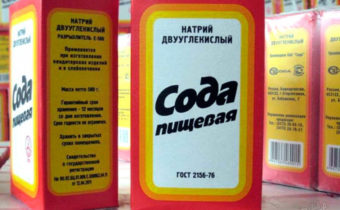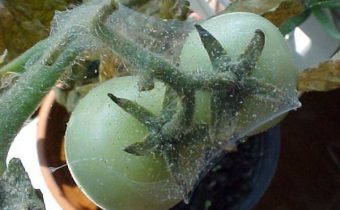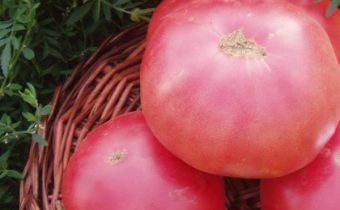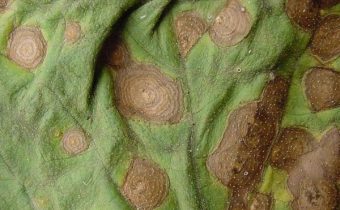Rusty mite on tomatoes, how to get rid of?
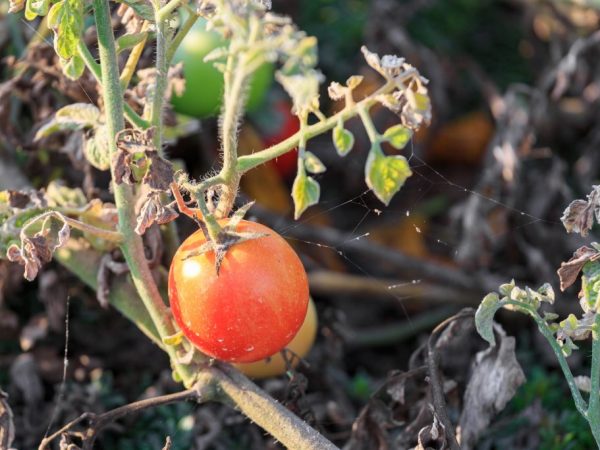
In case of damage to planting a tomato with a rusty mite, it may suffer up to half the crop. The pest is especially dangerous for plants in the greenhouse, since it grows year-round in conditions of greenhouse, quickly increasing its population. In the open-air beds appears in the spring, representing the greatest threat in the hot and dry summer.
Pest characterization
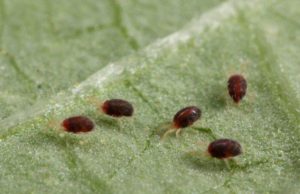
Tomato rusty mite - sucking pest, which received its name for the rust-brown color. Maybe a yellow shade. It is not easy to detect the pest, because its eggs are transparent and the size of the adult insect is small: the length of the female’s body is 0.25 mm, and the male is 0.12 mm.
The pest is spread by the wind, which allows it to spread over large areas. Infection can also occur through water or gardener's inventory and clothing.
In addition to tomatoes, it affects pepper, potatoes, eggplants, as well as decorative solanaceous - petunia, physalis and others. But tomatoes are the pest's favorite crop.
The most favorable conditions for the growth of a mite colony are air temperatures of + 25 ... + 27 ° C and low humidity - 30-40%. In such an environment, the full cycle of development of the insect takes no longer than a week. At lower temperatures (about 20 ° C), the pest needs 2 weeks. In rainy weather, tick activity stops. The insect hibernates on weeds and plant debris.
Symptoms of tomato damage:
- in the lower part of the plant on the leaves and stems brown spots are formed;
- on the bush, spreading from the bottom up, silvery spots appear, which gradually acquire a rusty tint;
- leaves turn brown and dry;
- the stem turns gray and cracks;
- the growth of bushes slows down;
- with defeat during the flowering period, a drop of flowers is observed;
- the fruits frown, acquire a bronze color, grow a small size.
With a significant lesion, the skin of the tomatoes becomes rough and cracks. Damaged fruits are not suitable for food.
Rust removal
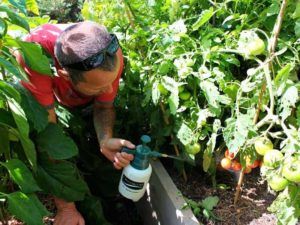
If a pest is found, it should be treated with chemicals. It is recommended to change drugs in view of the ability of ticks to develop resistance to active substances.
Effective means:
- Dimethoate-based drugs - "Phosphamide", "BI-58", "Accent", "Rogor". For processing tomatoes prepare a solution of low concentration - in a bucket of water should be diluted 10-20 ml of the substance.
- The same acaricides and insectoacaricides that are used in the fight against spider mites are suitable, but at a higher dosage (10–15% more) - “Actellic”, “Neoron”, “Fufanon”, “Vertimek”, “Karate”, “ Omayt, Borneo.
- Sulfur-containing products (Tiovet Jet, colloidal sulfur, Cumulus) in a concentration of 0.05-0.08%.
Spraying should be carried out 2 times with a break of 7 days. Since the pest is invulnerable to chemicals in the egg phase, repeated spraying is necessary to destroy the second wave of insects. The last chemical treatment is done 2-3 weeks before picking the fruit (according to the instructions of the preparation), in addition, exclude processing during the flowering of tomatoes.
As folk remedies for combating ticks, infusions of garlic, horseradish, onion peel, herbs (wormwood, celandine, chamomile, dandelion, calendula), potato tops, tobacco leaves have proven to be very good.Homemade recipes are effective in the initial stage of a lesion, as a prophylactic or adjuvant.
When rusted mites appear on planting closed ground after harvesting, it should be fumigated with greenhouse sulfur. To do this, burn 200 g of sulfur for every 1 m3 of greenhouse space and do not air the shelter for 5 days.
Prevention
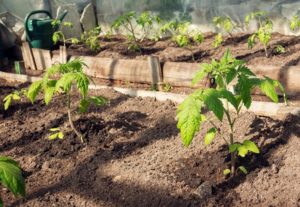
Preventive measures are recommended first of all to residents of the southern regions, in the hot summer, as well as when growing tomatoes in the greenhouse.
Main events:
- Crop rotation. Planting tomatoes and other solanaceous crops must be reversed every couple of years with rows of cucumbers, cabbage, and pumpkins.
- Weed control. The first step is to remove the grass from the Solanaceae family (nightshade, dope, bindweed), since they also become habitats for ticks.
- Autumn cleaning beds. It is necessary to clean the tops of tomatoes, the remnants of the fruit and make digging.
- Planting resistant varieties. At the moment, there are no uniquely pest-resistant varieties (according to N. Romuald, candidate of biological sciences). Relative stability is shown by “Novice”, Finish ”,“ Titan ”and“ Volgogradets ”. It is also noted that the varieties of tomatoes, which have an edge on the leaves, are more attractive to the pest. Foreign varieties, for example, “Arizona”, “Rio Grande”, “Vita”, “Red Star”, “Mikado”, “Gina” and others, turned out to be the most vulnerable to tick attacks.
The distribution of rust mite is gradually increasing. Pest infestation of planting of tomatoes and other solanaceous crops in regions where a tick did not appear before has been noticed. Because of this, the minimum prevention in greenhouses and regions of the middle zone should be adopted by all gardeners.


